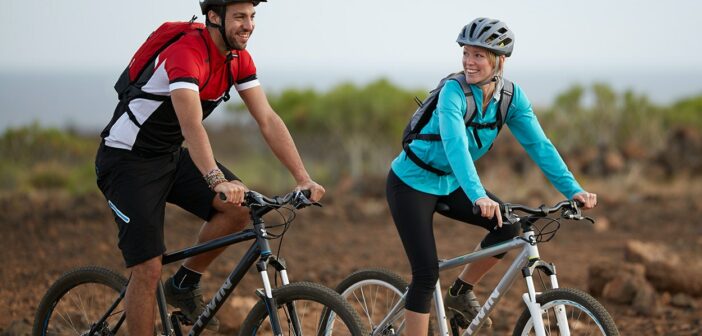Different disciplines of cycling require different types of clothing. However, there is a common set of rules on how to dress properly when cycling your bike, like trying to dress in layers so you can easily adjust to changing weather conditions. Dressing properly for cycling is important for comfort, safety, and performance. So, when it comes to dressing properly what are the common rules to follow.
Base Layer, the foundation of your clothing. Its main purpose is to help regulate your body temperature and help your body’s natural defences against overheating. In the summer it will wick away sweat and keep you cool, and, in the winter, it will keep you warm without the clammy feeling. Avoid cotton as it can be become heavy and uncomfortable when wet. More information about base layers can be found HERE.
Cycling Shorts, if you are going long distance consider wearing padded cycling shorts to provide comfort. The padding (chamois) reduced friction and helps prevent chafing. If you are going off road mountain bike shorts are traditionally baggy to accommodate knee pads and allow for the shifting nature of off-road. The material used to make them is sturdier to offer abrasion and weather protection and has the option of padded liner. If you are commuting and wearing normal trousers makes sure they are not too baggy otherwise they will get caught up in the drivetrain and if it’s raining, consider a pair of waterproof trousers or over trousers. When choosing a pair of waterproof trousers check for their breathability and waterproofness. More information on cycling shorts can be found HERE
Jersey. Wear a fitted jersey or moisture wicking shirt that provides ventilation. Road jerseys typically have a longer back, shorter front and a higher neck shape and sleeves shaped to fit when in the bike position. Their off-road going cousins are bigger and have a low neck to accommodate the constant movement on the bike. They are made from material that is more robust than a road jersey. Always check the manufacturers size chart as a large with one brand won’t be the same as another. If you are simply commuting somewhere try and choose to wear a technical t-shirt and avoid wearing a cotton t-shirt. More information on cycling jerseys can be found HERE
Helmet. Always wear a properly fitted helmet to protect your head in case of accidents. Make sure it sits level on your head and covers your forehead. Helmet manufacturers recommend you replace your helmet every 3-5 years, even if it appears to be in good condition. If your helmet has been involved in a significant impact or crash, it should be replaced, regardless of its age or visible damage. More information about helmets can be found HERE
Shoes. Choose the right shoes for the type of cycling you’re doing. Road shoes have a stiff sole for efficient pedalling, while mountain bike shoes have a more flexible sole for walking. More information about road shoes can be found HERE
Accessories. Other items worth considering are sunglasses, windproof jacket or a rain jacket. Glasses with UV protection help shield your eyes from the sun, wind, insects and debris. Depending on the weather consider wearing a light weight, windproof jacket or vest that can be easily put in a pocket if you get warm. If it’s raining, consider wearing a rain jacket. Always look out for the jacket’s breathability and waterproofness. More information on rain jackets can be found HERE.
Remember that comfort and safety is paramount. Your clothing should allow for a full range of motion and help you stay visible to others on the road. As you gain more experience, you’ll develop your own preference for what works best for you during your rides.




